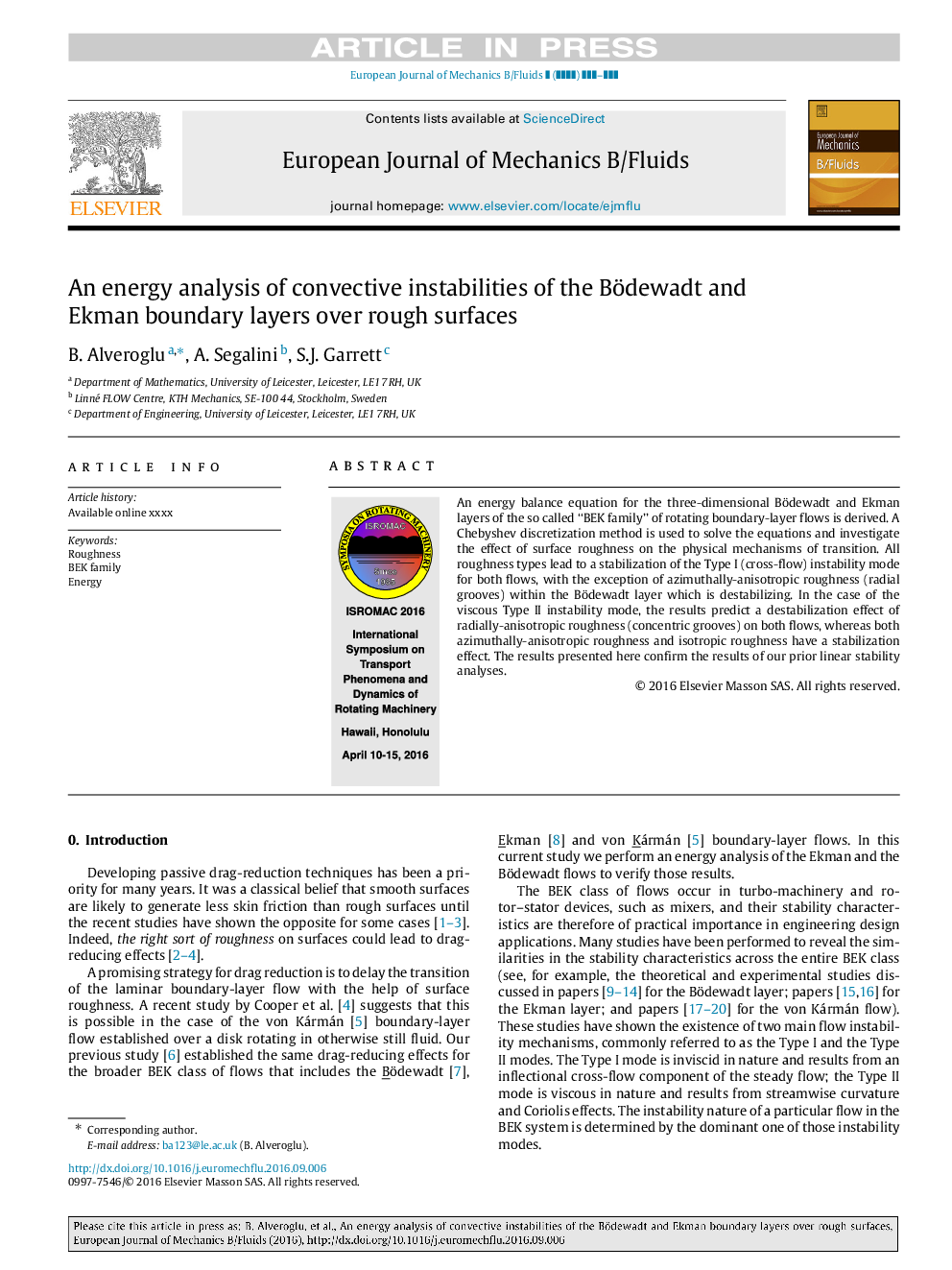| Article ID | Journal | Published Year | Pages | File Type |
|---|---|---|---|---|
| 4992333 | European Journal of Mechanics - B/Fluids | 2017 | 6 Pages |
Abstract
An energy balance equation for the three-dimensional Bödewadt and Ekman layers of the so called “BEK family” of rotating boundary-layer flows is derived. A Chebyshev discretization method is used to solve the equations and investigate the effect of surface roughness on the physical mechanisms of transition. All roughness types lead to a stabilization of the Type I (cross-flow) instability mode for both flows, with the exception of azimuthally-anisotropic roughness (radial grooves) within the Bödewadt layer which is destabilizing. In the case of the viscous Type II instability mode, the results predict a destabilization effect of radially-anisotropic roughness (concentric grooves) on both flows, whereas both azimuthally-anisotropic roughness and isotropic roughness have a stabilization effect. The results presented here confirm the results of our prior linear stability analyses.
Related Topics
Physical Sciences and Engineering
Chemical Engineering
Fluid Flow and Transfer Processes
Authors
B. Alveroglu, A. Segalini, S.J. Garrett,
